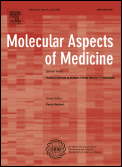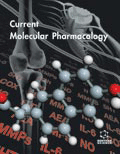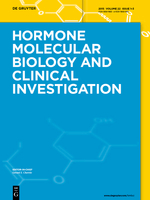
PEPTIDES
Scope & Guideline
Innovating Insights in Health and Disease
Introduction
Aims and Scopes
- Neuropeptide Research:
The journal consistently publishes studies exploring the roles of neuropeptides in the central and peripheral nervous systems, examining their implications in neurodegenerative diseases, pain modulation, and metabolic disorders. - Peptide Therapeutics:
Research on novel peptide-based therapeutics, including their mechanisms of action and potential applications in treating various diseases, particularly neurodegenerative disorders, obesity, and pain management. - Mechanistic Studies:
A strong emphasis on elucidating the molecular mechanisms through which peptides exert their effects, utilizing techniques ranging from in vivo animal models to biochemical assays. - Interdisciplinary Approaches:
Integration of various scientific disciplines, including pharmacology, biochemistry, and molecular biology, to enhance understanding of peptide functions and therapeutic potentials. - Clinical Applications:
Focus on translational research that aims to bridge the gap between peptide research and clinical applications, particularly in the context of mental health, metabolic syndromes, and neuroprotection.
Trending and Emerging
- Neuroinflammation and Neuroprotection:
A growing focus on the roles of peptides in neuroinflammation and their protective effects against neurodegenerative conditions, indicating an increasing interest in the neuroprotective potentials of peptides. - Gut-Brain Axis:
Emerging studies investigating the influence of gut-derived peptides on brain function and behavior, highlighting the importance of the gut-brain axis in health and disease. - Peptide-Based Biomaterials:
An increase in research on the development of peptide-based biomaterials for therapeutic applications, including drug delivery systems and tissue engineering. - Personalized Medicine Approaches:
Research is trending towards personalized medicine, with studies exploring how individual variations in peptide signaling pathways can influence treatment outcomes. - Chemogenetics and Optogenetics in Peptide Research:
The integration of advanced techniques like chemogenetics and optogenetics to manipulate peptide signaling pathways in specific neuronal populations is becoming more prevalent, paving the way for innovative therapeutic strategies.
Declining or Waning
- Traditional Herbal Peptides:
Research on traditional herbal peptides, such as those derived from Kampo medicine, has decreased in frequency, possibly due to a shift towards more mechanistic and modern therapeutic approaches. - Basic Pharmacological Studies:
There is a noticeable decline in basic pharmacological studies focusing solely on peptide interactions without addressing their clinical implications or translational relevance. - Animal Models of Disease:
Although still significant, the number of studies using animal models to explore peptide functions has waned, potentially due to increasing ethical considerations and a push for alternative research methodologies.
Similar Journals

FREE RADICAL RESEARCH
Advancing the Science of Oxidative StressFREE RADICAL RESEARCH, published by TAYLOR & FRANCIS LTD, stands at the forefront of studies in biochemistry and medicine, with a distinguished trajectory since its inception in 1985. This esteemed journal, which boasts an ISSN of 1071-5762 and an E-ISSN of 1029-2470, is recognized for its impactful contributions within the scientific community, as evidenced by its Q2 ranking in the 2023 category quartiles for both Biochemistry and miscellaneous Medicine. Utilizing rigorous peer-review standards, FREE RADICAL RESEARCH disseminates critical findings on the role of free radicals in biological systems, facilitating knowledge exchange among researchers, healthcare professionals, and students. Although it is not an open-access journal, its reach through academic databases ensures visibility and accessibility of groundbreaking research, making it an indispensable resource for those engaged in the dynamic fields of biochemistry and molecular biology. As the journal continues to evolve until 2024, it remains committed to advancing our understanding of oxidative stress and its implications for health and disease.

MOLECULAR ASPECTS OF MEDICINE
Catalyzing Discoveries in Biomedical ScienceMOLECULAR ASPECTS OF MEDICINE is a premier journal published by Elsevier, focusing on groundbreaking research in the fields of biochemistry, molecular biology, and medicine. With an impressive impact factor and ranking within the top quartile across multiple categories, including Q1 in Biochemistry, Clinical Biochemistry, and Molecular Medicine, it serves as an essential platform for sharing innovative findings that advance our understanding of molecular mechanisms in health and disease. The journal, which has been in publication since 1976, provides a diverse range of articles, addressing both fundamental and applied aspects of molecular medicine, thus appealing to a broad audience of researchers, professionals, and students. While MOLECULAR ASPECTS OF MEDICINE does not currently offer Open Access options, it remains a vital resource for accessing high-quality, peer-reviewed scholarly works that significantly contribute to the advancement of biomedical research.

Neuropeptides
Bridging Research and Clinical ApplicationsNeuropeptides is a prestigious, peer-reviewed journal published by Elsevier, focusing on the critical role of neuropeptides in various biological processes and their implications in cellular and molecular neuroscience, endocrinology, and neurology. With an impact factor reflecting its influence in the field and a diverse audience ranging from researchers to healthcare professionals, the journal serves as an essential platform for the dissemination of groundbreaking research from 1980 to 2024. Adhering to high academic standards, Neuropeptides holds a Q3 ranking in Cellular and Molecular Neuroscience and Endocrine and Autonomic Systems, alongside a solid Q2 ranking in both Endocrinology and Neurology. This positions the journal at the forefront of its disciplines, contributing valuable insights into the understanding of neuropeptide functions in health and disease. By not operating as an Open Access journal, it ensures sustainability in the publishing process while upholding rigorous review standards. Researchers, professionals, and students are encouraged to engage with the findings published in this journal, which plays a vital role in advancing knowledge and fostering collaboration within the neuroscientific community.

CRITICAL REVIEWS IN BIOCHEMISTRY AND MOLECULAR BIOLOGY
Synthesis of Cutting-edge Biochemical DiscoveriesWelcome to Critical Reviews in Biochemistry and Molecular Biology, a premier academic journal published by Taylor & Francis Ltd, dedicated to advancing the fields of biochemistry and molecular biology. With an impressive impact factor and a Q1 ranking in both Biochemistry and Molecular Biology for 2023, this journal serves as a vital resource for researchers, professionals, and students eager to engage with cutting-edge reviews and analyses that synthesize the latest developments in these dynamic areas of study. Since its inception in 1972, the journal has maintained a commitment to high-quality scholarship, providing a platform for critical discussions that accelerate the discovery and understanding of biochemical processes and molecular interactions. Although not open access, its robust editorial peer-review process ensures that published articles meet the highest standards of scientific rigor, making it a trusted source for the scientific community. As we continue to converge toward 2024, we invite you to explore the extensive array of topics and findings that have shaped contemporary biochemistry and molecular biology.

REDOX REPORT
Fostering Dialogue in Life Sciences ResearchREDOX REPORT is a peer-reviewed academic journal published by Taylor & Francis Ltd, focusing on the latest advancements in the fields of biochemistry, clinical biochemistry, and physiology. Since its inception in 1996 and transitioning to an Open Access model in 2018, this journal has aimed to disseminate high-quality research findings and foster discussions within the scientific community. Positioned in the Q2 quartile across several relevant categories, including Biochemistry, Cell Biology, and Clinical Biochemistry, REDOX REPORT is recognized for its commitment to impactful research. The journal plays a crucial role in bridging the gap between fundamental biochemical research and its clinical applications, making it an essential resource for researchers, professionals, and students alike. With a consistent publication record extending to 2024, REDOX REPORT is dedicated to featuring cutting-edge studies that advance our understanding of redox biology, thereby contributing significantly to the ongoing dialogue in the life sciences.

Current Molecular Pharmacology
Exploring Innovations in Drug DiscoveryCurrent Molecular Pharmacology, published by Bentham Science Publishers, is a prominent journal focused on the dynamic fields of pharmacology, drug discovery, and molecular medicine. With an ISSN of 1874-4672 and an E-ISSN of 1874-4702, this journal aims to disseminate cutting-edge research and review articles that showcase innovative methodologies and groundbreaking findings from 2008 through 2024. Holding a respectable Q3 category ranking in Drug Discovery, Molecular Medicine, and Pharmacology for 2023, Current Molecular Pharmacology serves as an essential platform for both established researchers and emerging scholars to share their insights. The journal is indexed in Scopus with its relevant ranks catering to pharmacology and molecular biology, ensuring it reaches a wide array of professionals, researchers, and students in the field. As a contributor to advancing pharmacological sciences, this journal provides invaluable access to the latest advancements and fosters ongoing dialogue in molecular pharmacology, positioning itself as a key resource in the exploration of therapeutic agents and their interactions.

Turkish Journal of Biochemistry-Turk Biyokimya Dergisi
Empowering researchers with cutting-edge biochemical discoveries.Turkish Journal of Biochemistry-Turk Biyokimya Dergisi, published by WALTER DE GRUYTER GMBH, is a pivotal open-access journal in the field of biochemistry that serves as a forum for innovative research and scholarly discourse. Since its inception in 2009 and transitioning to open access in 2015, this journal has gained recognition within the scientific community, reflecting a commitment to advancing knowledge in biochemistry and related medical sciences. With a diverse scope that encompasses molecular biology, clinical biochemistry, and the broader arena of biochemical studies, Turkish Journal of Biochemistry offers researchers, professionals, and students access to impactful studies and current developments. Although currently positioned in the lower quartiles in specific categories, the journal aims to enhance its visibility and engagement as it converges towards a promising future, fostering collaboration and knowledge exchange among biochemists across Turkey and around the globe. This journal is vital for anyone seeking to stay abreast of emerging trends and research findings in biochemistry.

EXPERIMENTAL AND MOLECULAR MEDICINE
Connecting scholars to the latest in experimental medicine.EXPERIMENTAL AND MOLECULAR MEDICINE, published by SpringerNature, is a premier open-access journal that has been at the forefront of biomedical research since its establishment in 1996. With a focus on innovative studies in biochemistry, molecular biology, and clinical biochemistry, the journal has consistently maintained a distinguished position within the top quartile (Q1) across multiple categories, underscoring its significant impact in these fields. The journal offers researchers and practitioners a platform for high-quality, peer-reviewed articles that advance our understanding of molecular mechanisms underlying health and disease. As a crucial resource for scholars seeking to explore cutting-edge research and practical advancements, its inclusion in relevant databases such as Scopus reflects an exceptional ranking with notable percentiles—placing it among the best in biomedical sciences. With a commitment to open access, EXPERIMENTAL AND MOLECULAR MEDICINE ensures that findings are readily available to the global academic community, facilitating collaboration and innovation in molecular medicine.

PTERIDINES
Unlocking the Secrets of Pteridines in Health and DiseasePTERIDINES is a unique journal dedicated to the study of pteridines and their implications in biochemistry and clinical research. Published by DE GRUYTER POLAND SP Z O O, this Open Access journal has been a vital resource since its inception in 1989, steadily evolving to include a diverse range of topics pertinent to molecular medicine and biochemistry. With its current classification in the Q4 quartile for Biochemistry, Clinical Biochemistry, and Molecular Medicine, PTERIDINES offers a platform for researchers and professionals seeking to disseminate and access groundbreaking findings. Although the journal has a modest Scopus ranking, it serves as an important outlet for both emerging and established scholars in the field, particularly those focusing on the biochemical roles of pteridines. Based in Germany, the journal invites contributions from around the globe, providing equitable access to all readers since 2018, making significant strides towards inclusive scientific discourse. As such, PTERIDINES is a valuable asset for anyone engaged in the exploration of pteridines and their multifaceted roles in health and disease.

Hormone Molecular Biology and Clinical Investigation
Exploring the Frontiers of Hormonal ScienceHormone Molecular Biology and Clinical Investigation, published by WALTER DE GRUYTER GMBH, is a pivotal journal within the realms of Endocrinology, Diabetes and Metabolism, and Molecular Biology, contributing significant insights to the field since its inception in 2010. With an ISSN of 1868-1883 and an E-ISSN of 1868-1891, this esteemed journal operates from its headquarters in Berlin, Germany. As a further testament to its growing influence, the journal has achieved respectable category quartile rankings in 2023, including Q3 in Endocrinology, Diabetes and Metabolism and Medicine (miscellaneous), alongside Q4 in Molecular Biology. While currently not open access, the journal is dedicated to disseminating high-quality research aimed at understanding hormone-related mechanisms, clinical applications, and the biochemical pathways that underpin human health. The rich variety of articles published in Hormone Molecular Biology and Clinical Investigation make it an invaluable resource for researchers, medical professionals, and students seeking to deepen their knowledge in these critical scientific areas.